Leveraging HUBzero to Enable STEM Education for High School Students
Category
Published on
Abstract
The Eric Pitman Annual Summer Workshop in Computational Science has been held at the Center for Computational Research (CCR) at the University at Buffalo, State University of New York, since 1999. The workshop introduces high school students to science, technology, engineering, and mathematics (STEM) disciplines through the application of computing to current STEM-related problems, and is offered to high school students who have completed at least their freshman year; no prior knowledge of computing is assumed. Past workshops explored computational chemistry, visualization, bioinformatics, and research in the life sciences. In addition to lectures and hands-on computational exercises, students tour working labs that perform genome sequencing, protein crystallography, and medical research. The two-week workshop culminates in a computational project involving a real scientific dataset, followed by student presentations.
In past workshops, students spent a substantial percentage of time learning the basics of a command line interface in order to prepare and submit jobs to CCR's computers. In 2013, we leveraged the HUBzero platform deployed at CCR (hpc2.org) to avoid the complexities of the Center's operating environment and instead allow greater focus on computational science. Students learned to perform calculations, write functions, and visualize datasets using the R statistical language. They then employed their new skills to explore a protein crystallization dataset and evaluate the performance of an automated classifier.
Students completed all coursework on hpc2.org, using the RStudio integrated development environment (IDE) within a tool container, and exploited RStudio's integration with GitHub to provide access to source files, examples, and datasets. WebDAV was used to export graphics created on hpc2.org onto local workstations. The students will retain access to the computing environment even after the workshop's conclusion.
Bio
Jeanette Sperhac is a Scientific Programmer at the University at Buffalo's Center for Computational Research (CCR). She holds an S.B. in Chemistry from the University of Chicago, an M.S. in Chemistry from the University of Colorado, and an M.S. in Computer Science from the University at Buffalo. Jeanette has worked as a software engineer and DBA in both academia and industry.
Jeanette supports a number of software engineering and web application projects at CCR, including hpc2.org, a HUBzero instance implemented for the partnership between Rensselaer Polytechnic Institute, Stony Brook University, Brookhaven National Laboratory, NYSERNet, and the University at Buffalo.
In 2013, she used RStudio running on the hpc2.org HUBzero instance to support CCR's annual Eric Pitman Workshop in Computational Science. She developed, taught, and supported the course, which took 12 high school students on a whirlwind tour of scientific computing, data analysis and visualization, and basic statistics, using the R language.
Cite this work
Researchers should cite this work as follows:
Submitter
Nikki Huang
Purdue University
Tags
-
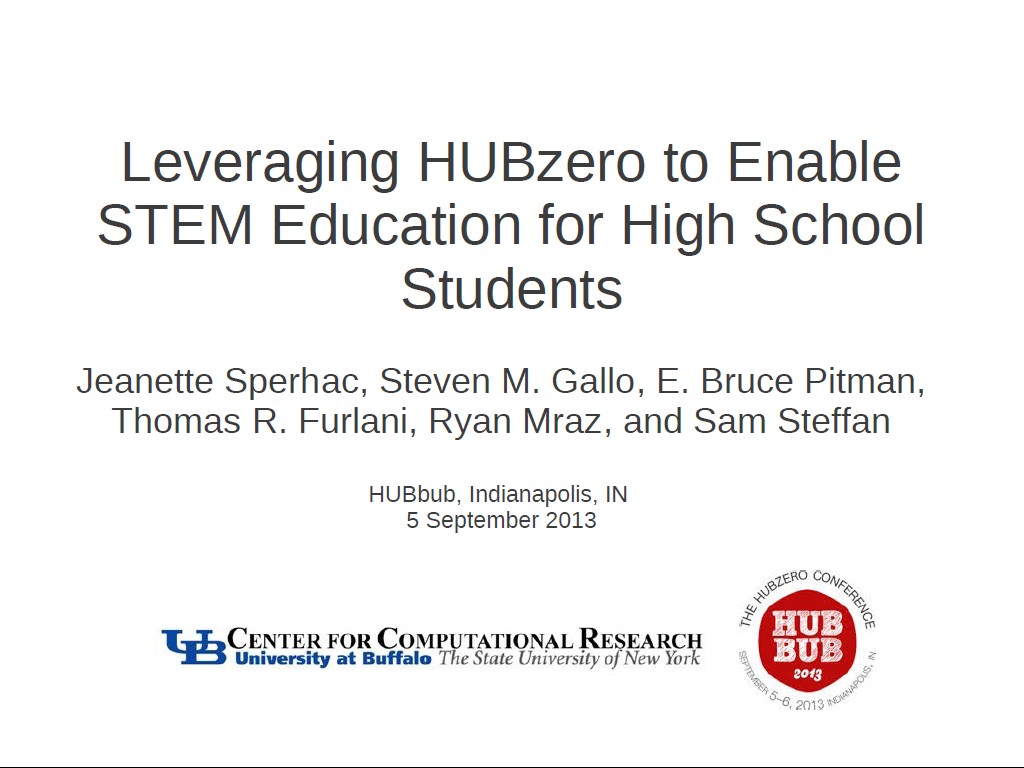 1. Leveraging HUBzero to Enable S…
0
00:00/00:00
1. Leveraging HUBzero to Enable S…
0
00:00/00:00 -
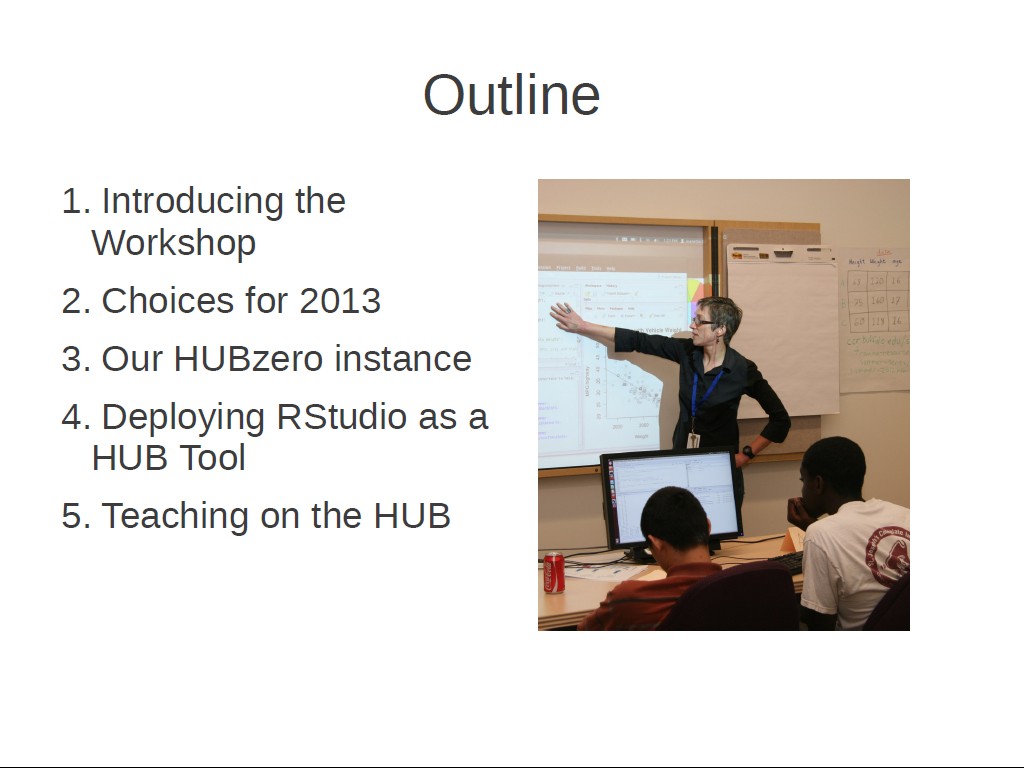 2. Outline
43.71037704371038
00:00/00:00
2. Outline
43.71037704371038
00:00/00:00 -
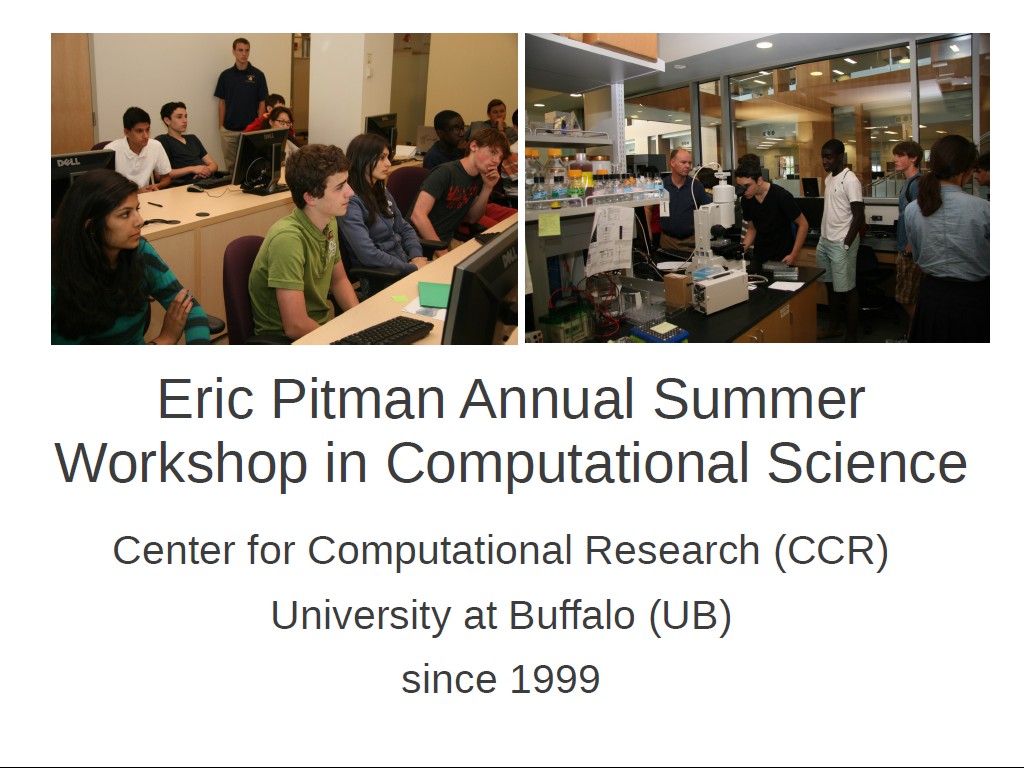 3. Eric Pitman Annual Summer
76.443109776443109
00:00/00:00
3. Eric Pitman Annual Summer
76.443109776443109
00:00/00:00 -
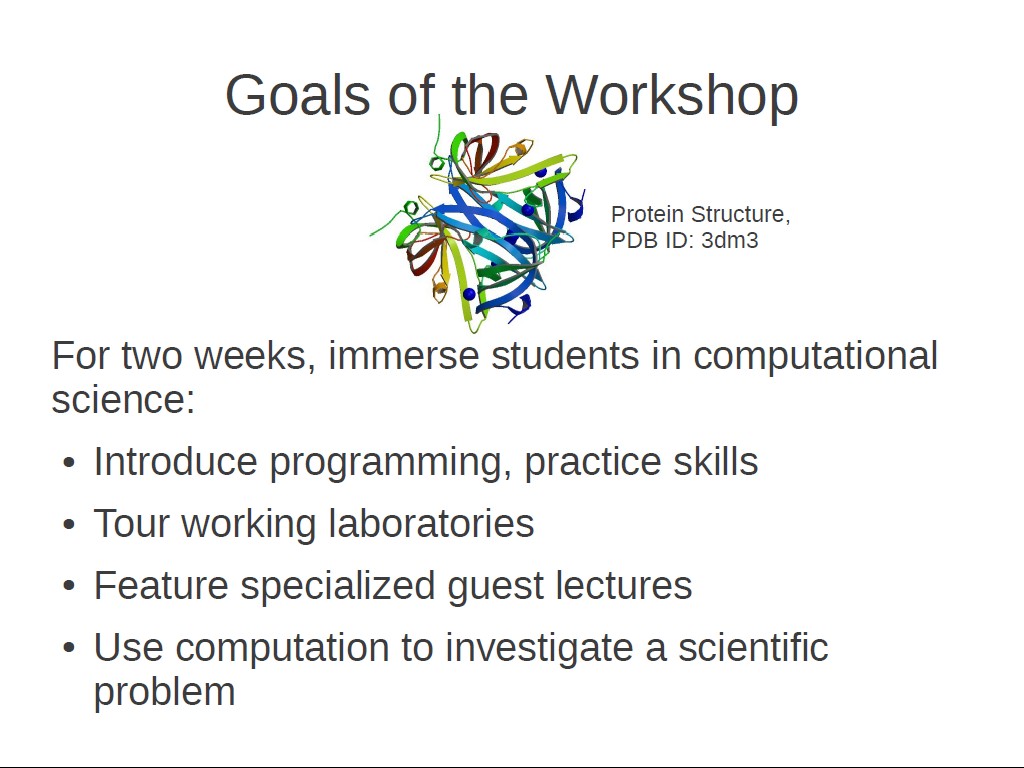 4. Goals of the Workshop
114.81481481481482
00:00/00:00
4. Goals of the Workshop
114.81481481481482
00:00/00:00 -
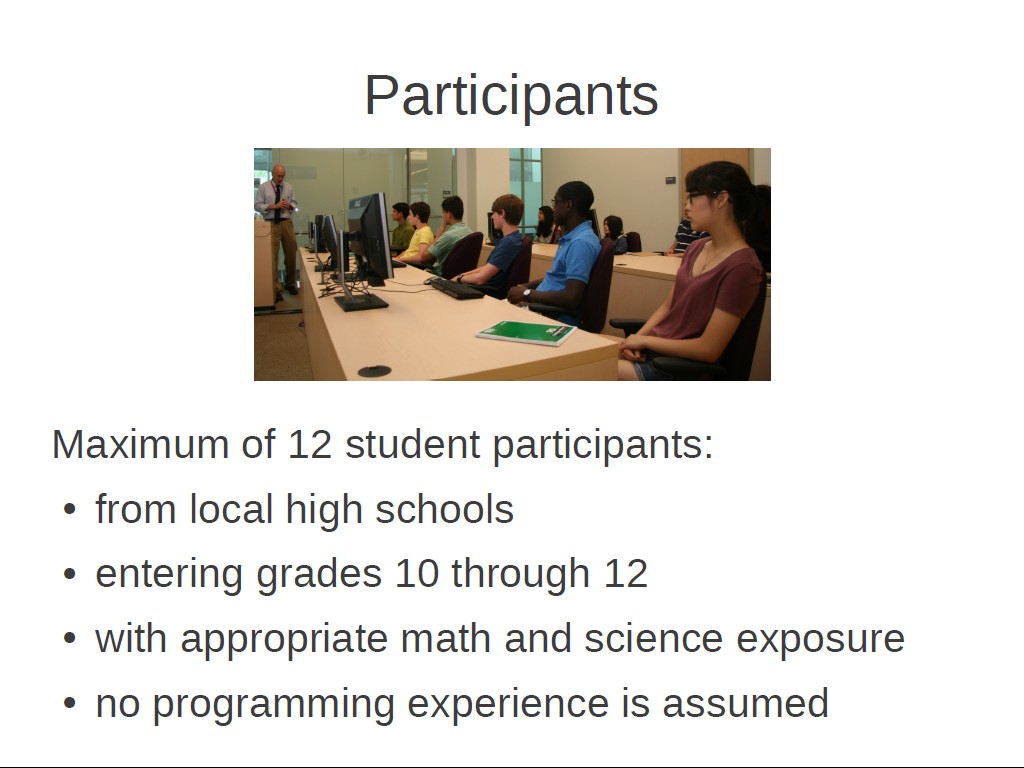 5. Participants
144.41107774441107
00:00/00:00
5. Participants
144.41107774441107
00:00/00:00 -
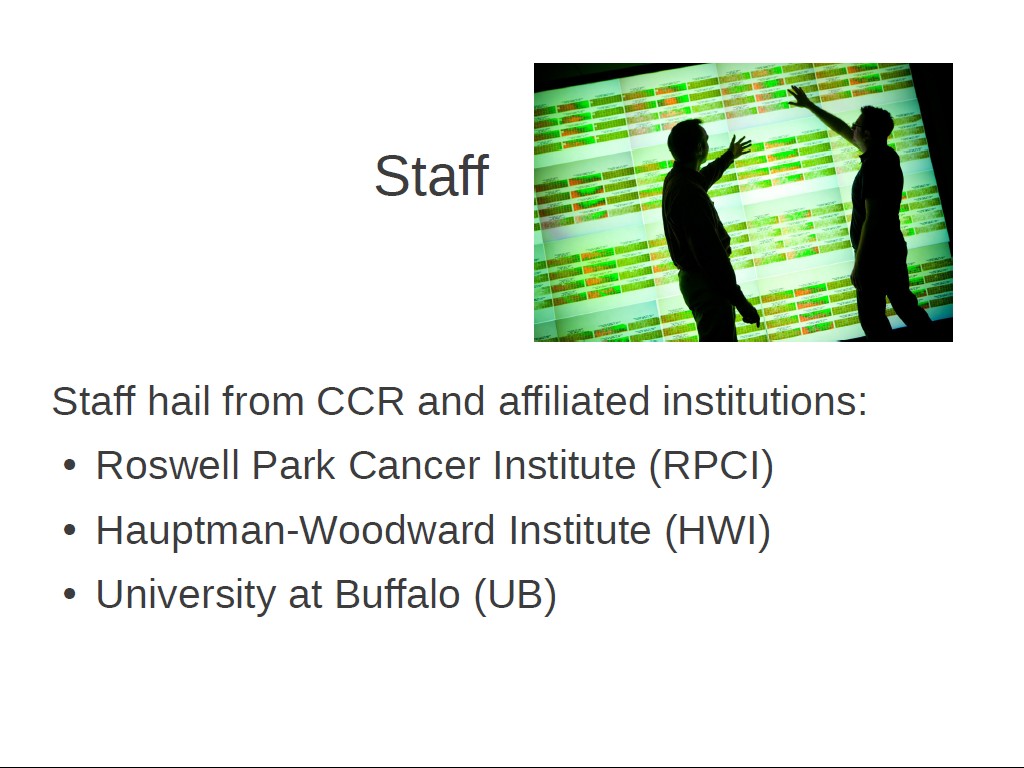 6. Staff
170.43710377043712
00:00/00:00
6. Staff
170.43710377043712
00:00/00:00 -
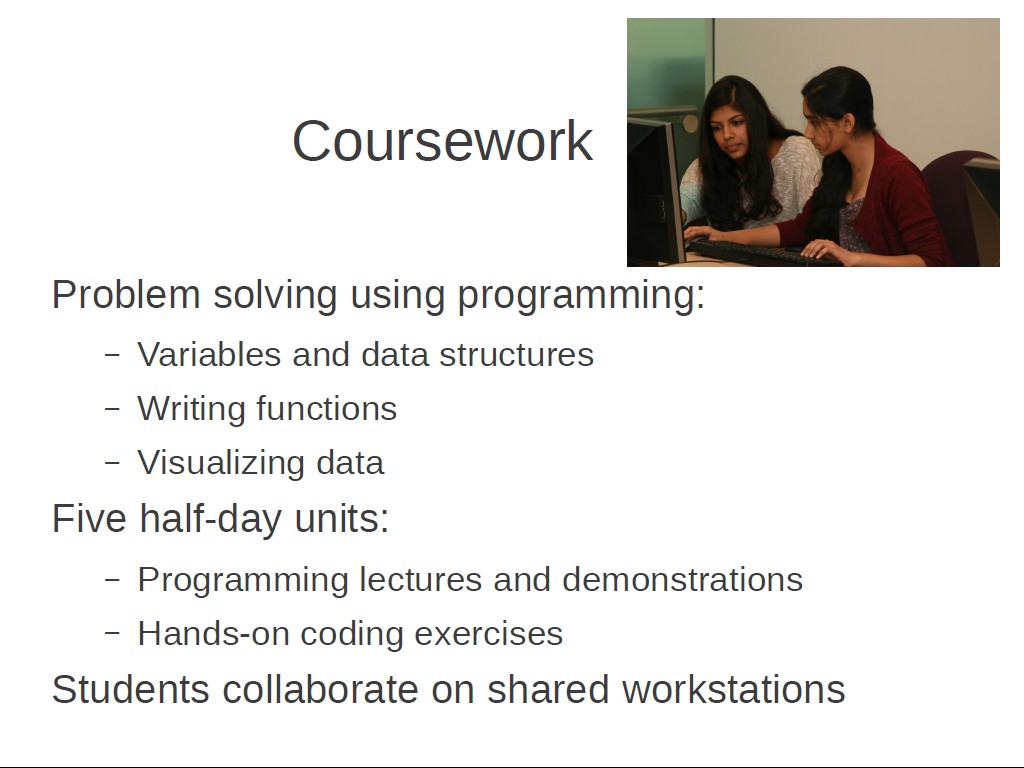 7. Coursework Problem solving usi…
190.82415749082418
00:00/00:00
7. Coursework Problem solving usi…
190.82415749082418
00:00/00:00 -
 8. Guest Lectures
214.91491491491493
00:00/00:00
8. Guest Lectures
214.91491491491493
00:00/00:00 -
 9. Lab Tours Tours provide scient…
243.20987654320987
00:00/00:00
9. Lab Tours Tours provide scient…
243.20987654320987
00:00/00:00 -
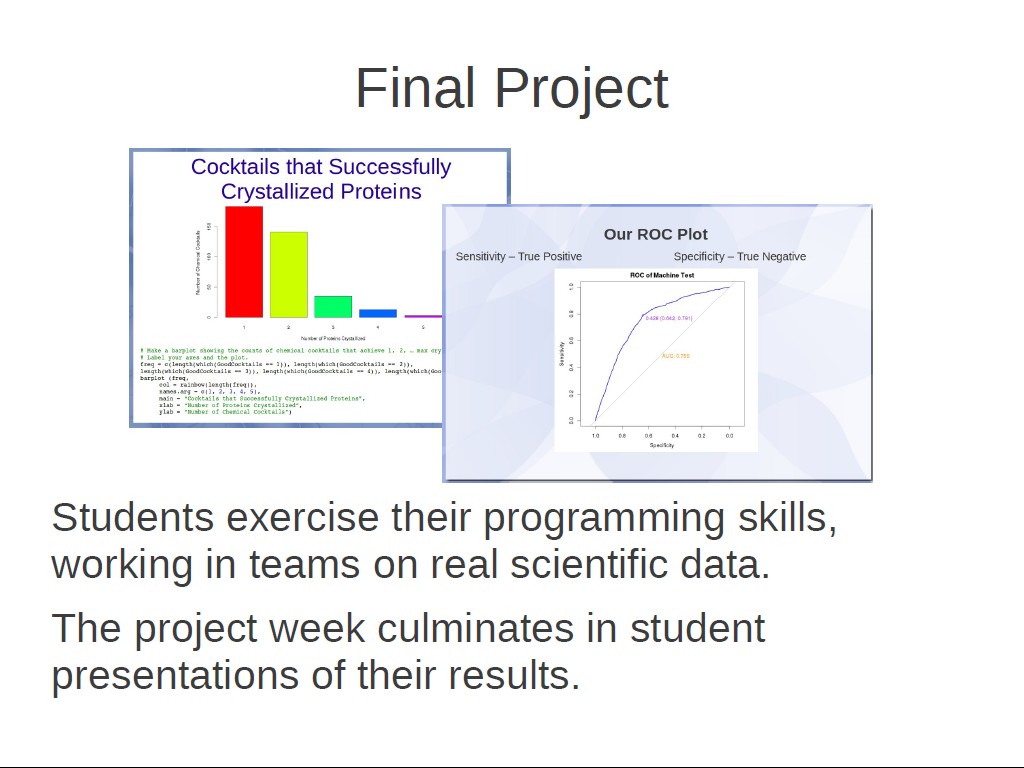 10. Final Project
260.99432766099432
00:00/00:00
10. Final Project
260.99432766099432
00:00/00:00 -
 11. How do we equip students to in…
278.91224557891223
00:00/00:00
11. How do we equip students to in…
278.91224557891223
00:00/00:00 -
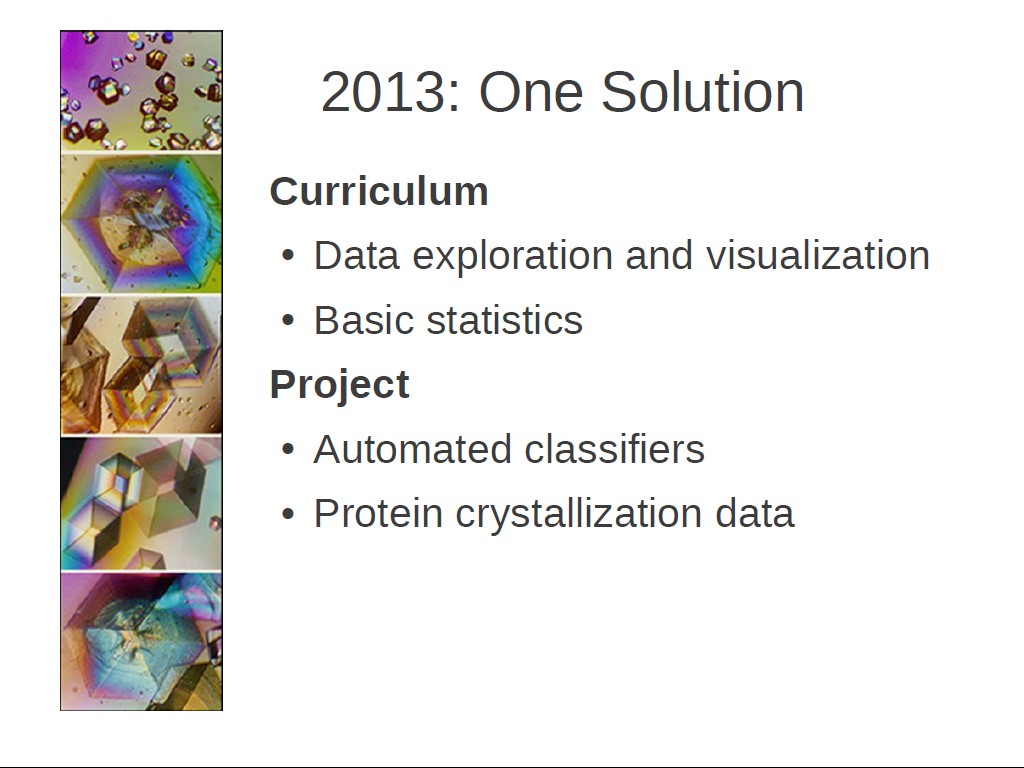 12. 2013: One Solution Curriculum
305.73907240573908
00:00/00:00
12. 2013: One Solution Curriculum
305.73907240573908
00:00/00:00 -
 13. 2013 Workshop Environment
342.2756089422756
00:00/00:00
13. 2013 Workshop Environment
342.2756089422756
00:00/00:00 -
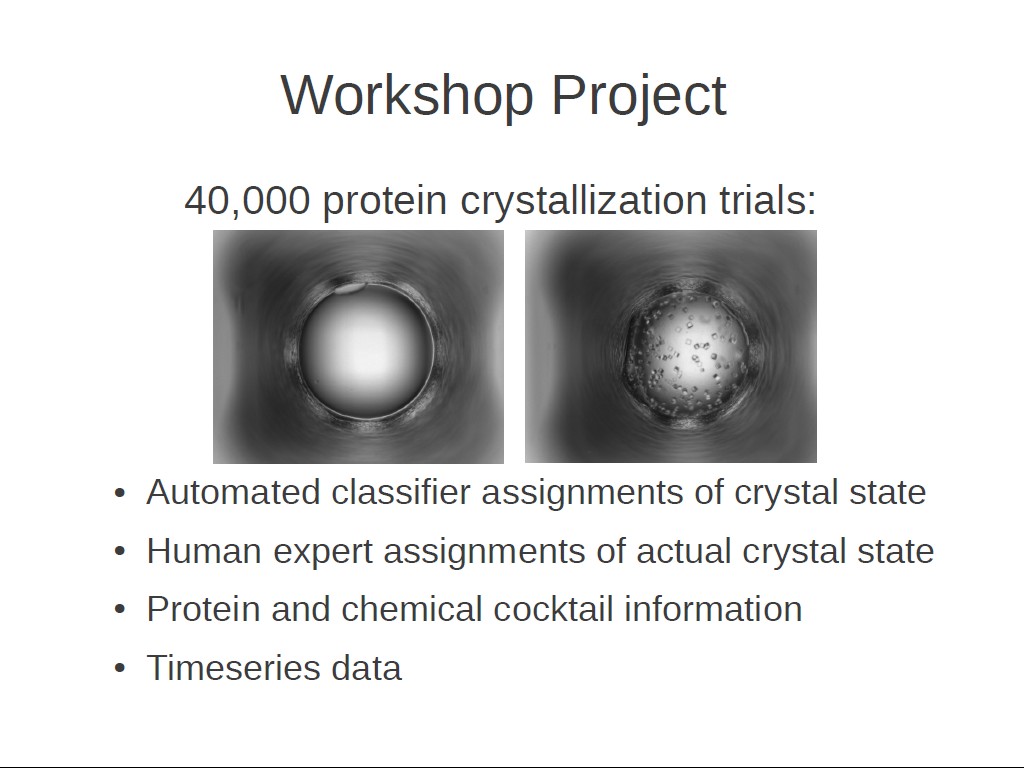 14. Workshop Project 40,000 protei…
375.94260927594263
00:00/00:00
14. Workshop Project 40,000 protei…
375.94260927594263
00:00/00:00 -
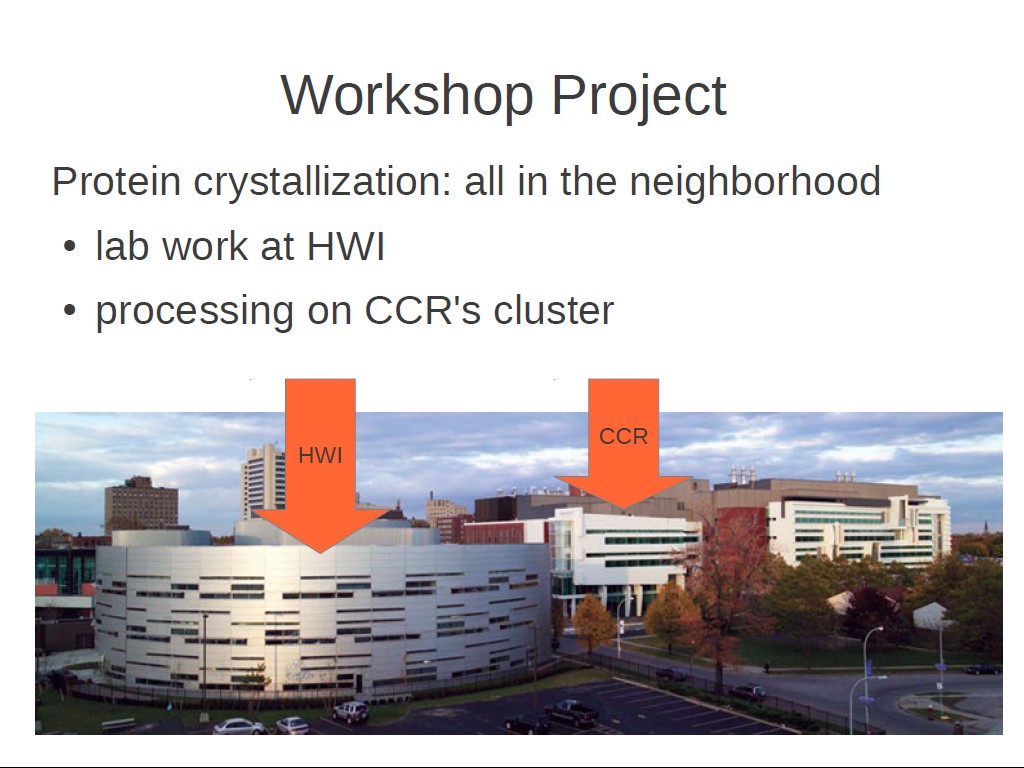 15. Workshop Project
405.33867200533871
00:00/00:00
15. Workshop Project
405.33867200533871
00:00/00:00 -
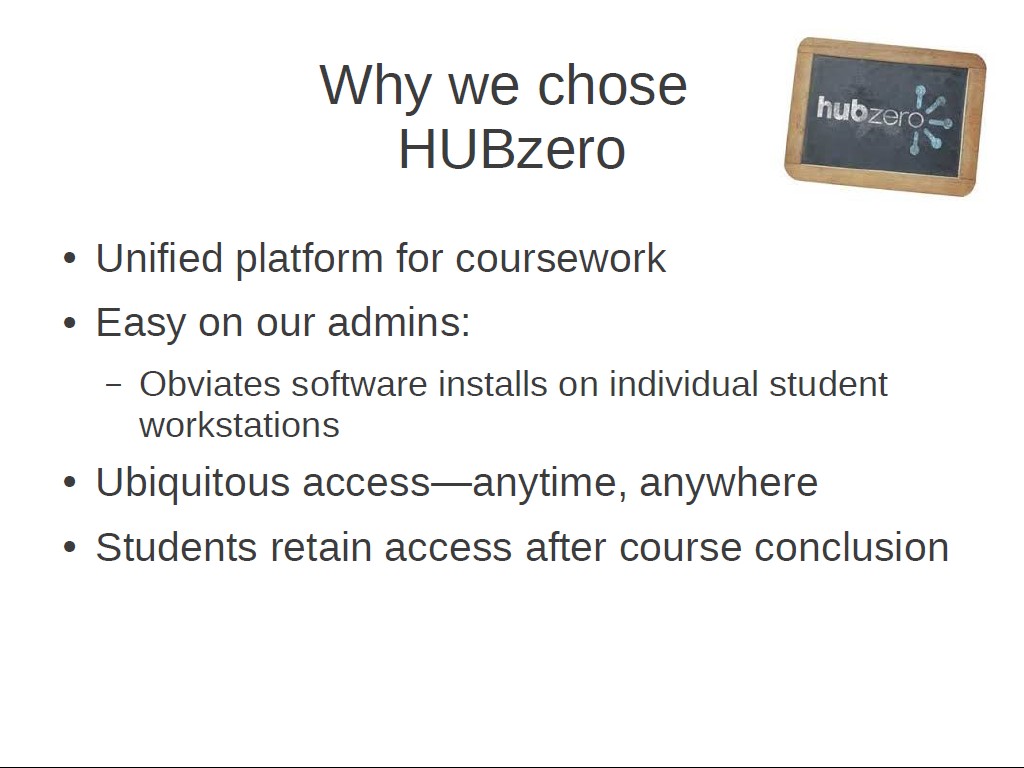 16. Why we chose HUBzero
421.22122122122124
00:00/00:00
16. Why we chose HUBzero
421.22122122122124
00:00/00:00 -
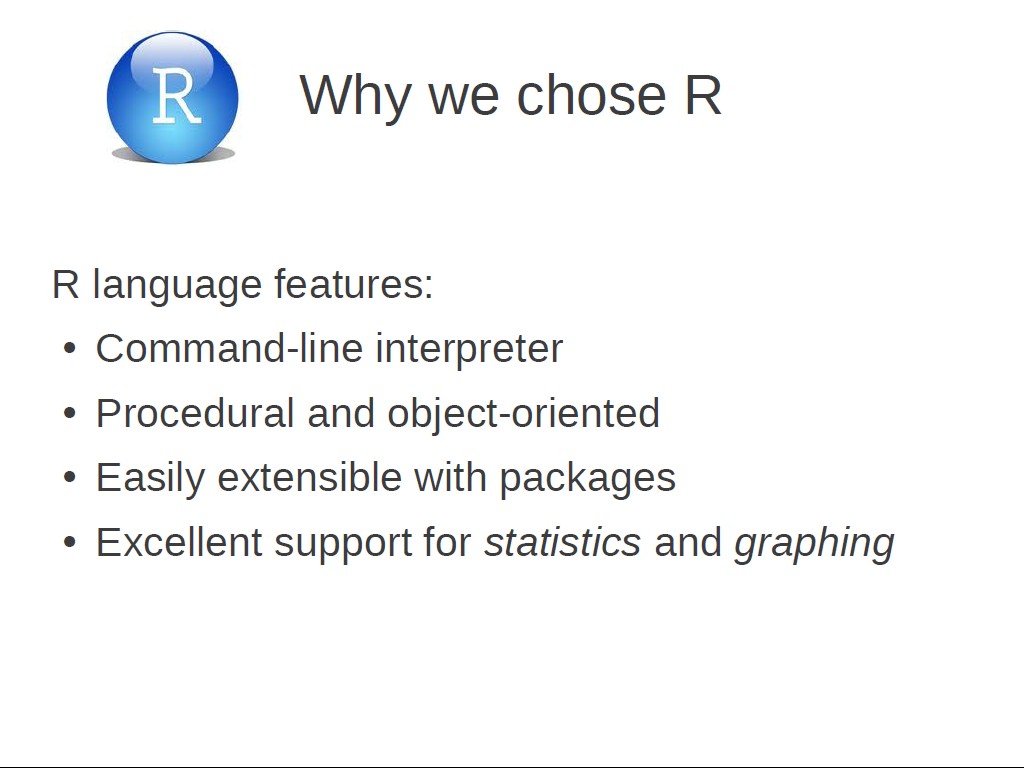 17. Why we chose R
461.59492826159493
00:00/00:00
17. Why we chose R
461.59492826159493
00:00/00:00 -
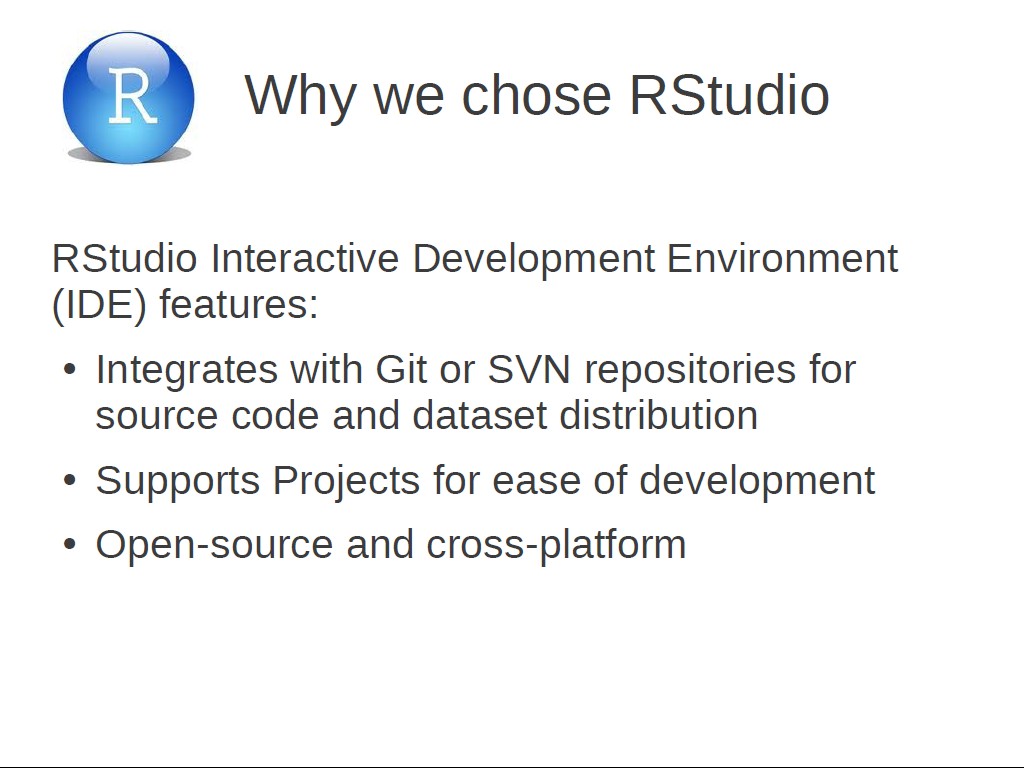 18. Why we chose RStudio RStudio
491.05772439105772
00:00/00:00
18. Why we chose RStudio RStudio
491.05772439105772
00:00/00:00 -
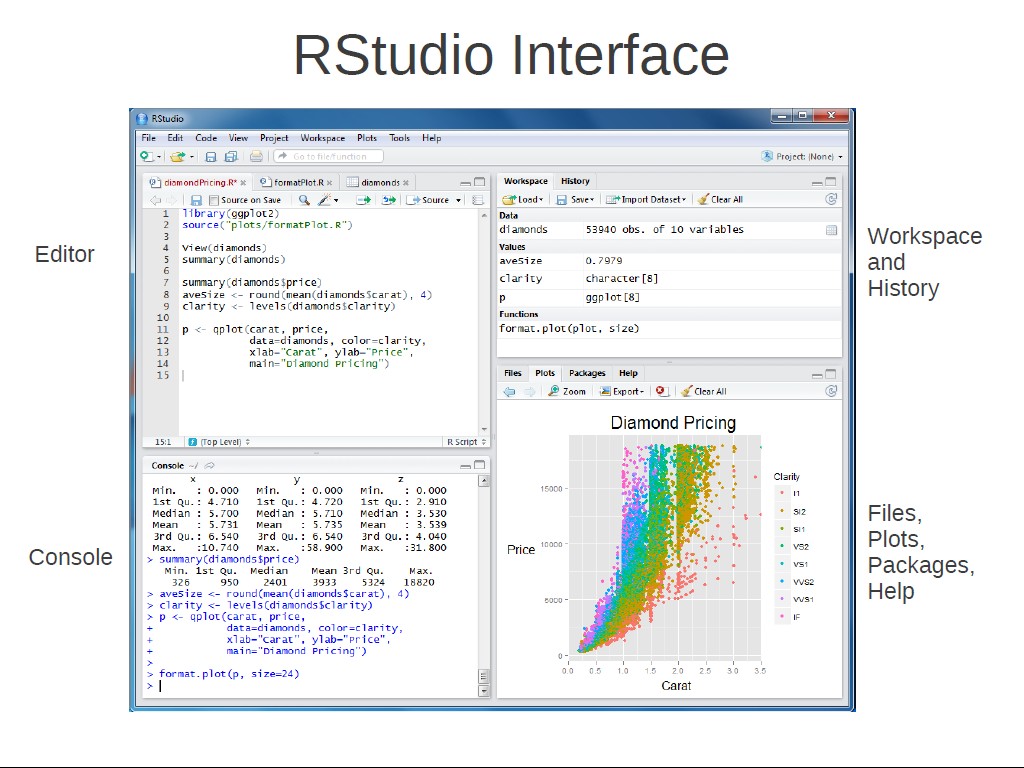 19. RStudio Interface
519.45278611945275
00:00/00:00
19. RStudio Interface
519.45278611945275
00:00/00:00 -
 20. HUBzero instance hardware
532.56589923256593
00:00/00:00
20. HUBzero instance hardware
532.56589923256593
00:00/00:00 -
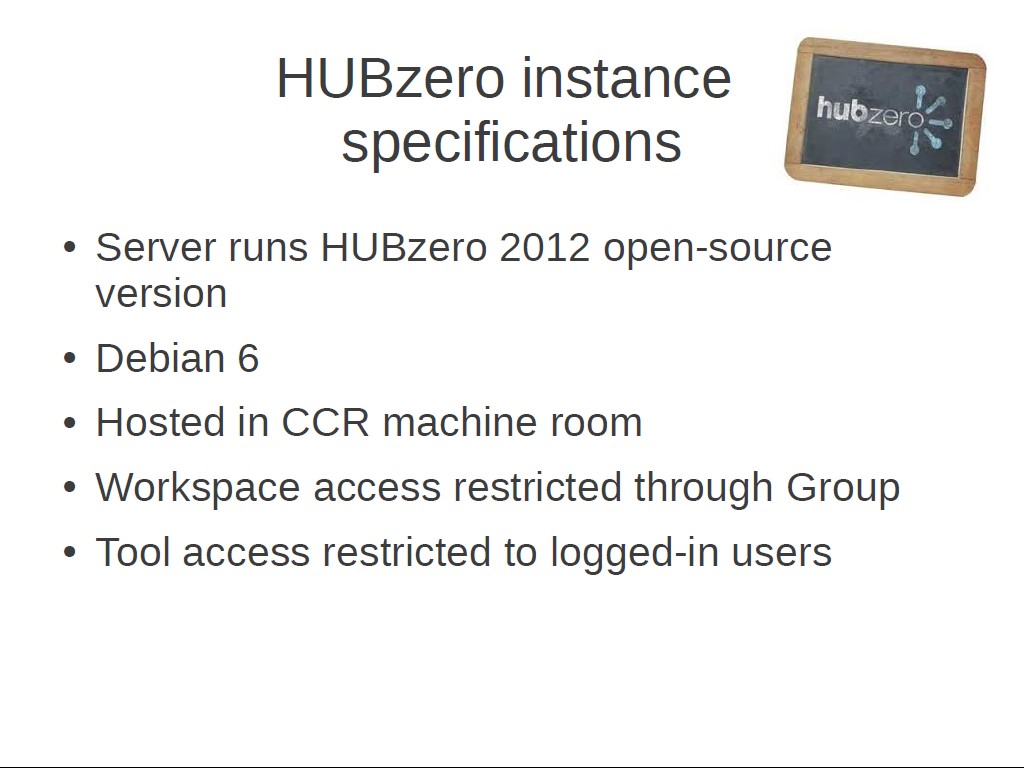 21. HUBzero Instance Specification…
547.61428094761425
00:00/00:00
21. HUBzero Instance Specification…
547.61428094761425
00:00/00:00 -
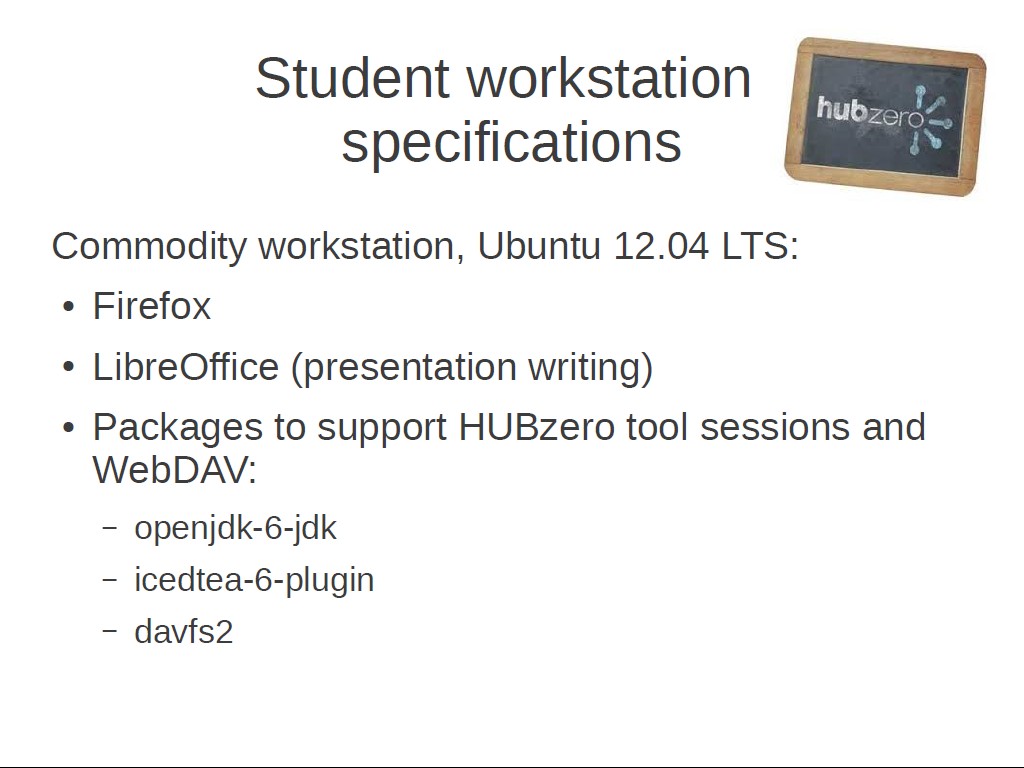 22. Student Workstation Specificat…
560.66066066066071
00:00/00:00
22. Student Workstation Specificat…
560.66066066066071
00:00/00:00 -
 23. Deploying RStudio as a HUBzero
571.50483817150484
00:00/00:00
23. Deploying RStudio as a HUBzero
571.50483817150484
00:00/00:00 -
 24. Deploying RStudio as a HUBzero…
590.9242575909243
00:00/00:00
24. Deploying RStudio as a HUBzero…
590.9242575909243
00:00/00:00 -
 25. Deploying RStudio as a HUBzero…
602.80280280280283
00:00/00:00
25. Deploying RStudio as a HUBzero…
602.80280280280283
00:00/00:00 -
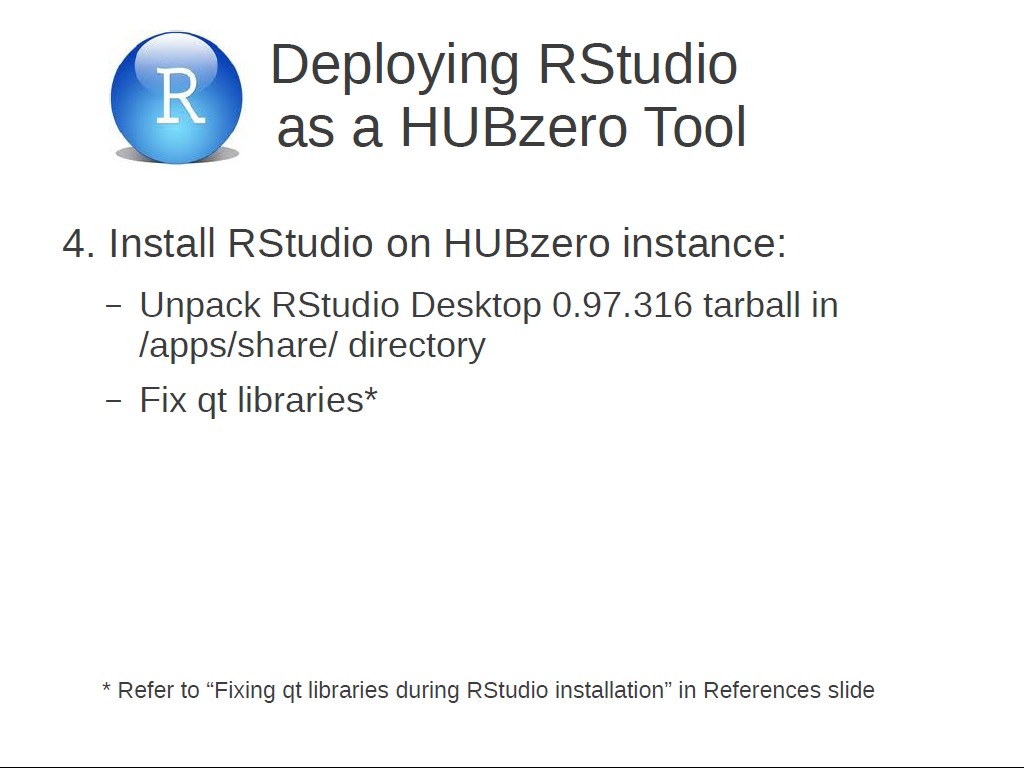 26. Deploying RStudio as a HUBzero…
611.44477811144475
00:00/00:00
26. Deploying RStudio as a HUBzero…
611.44477811144475
00:00/00:00 -
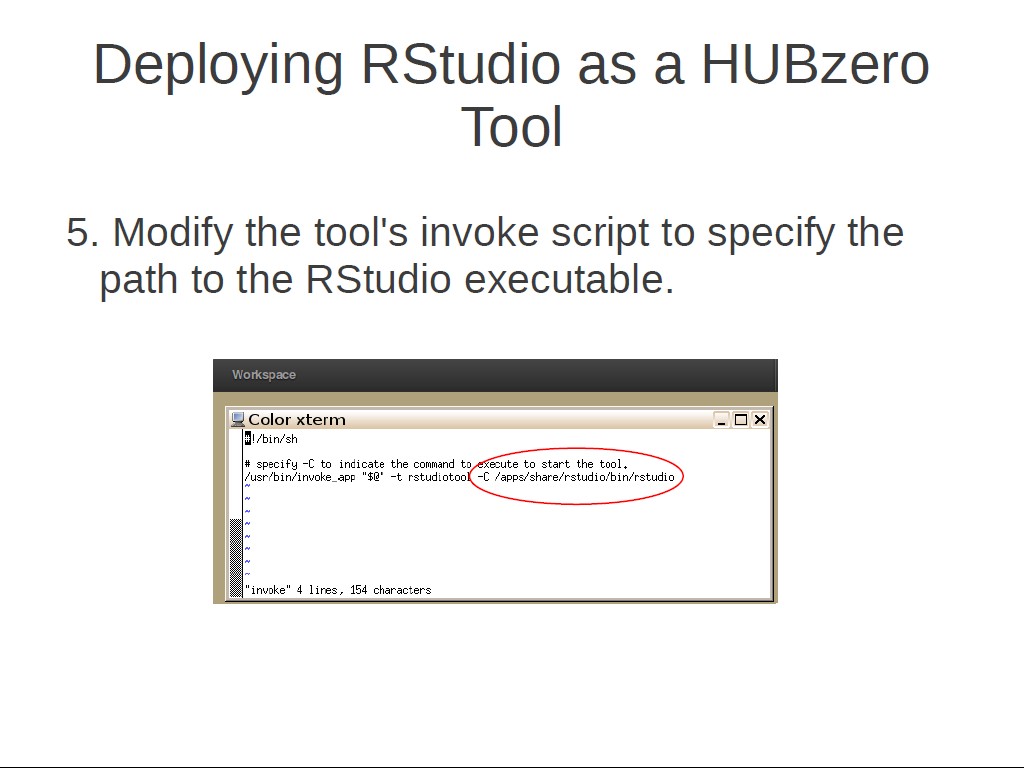 27. Deploying RStudio as a HUBzero…
627.02702702702709
00:00/00:00
27. Deploying RStudio as a HUBzero…
627.02702702702709
00:00/00:00 -
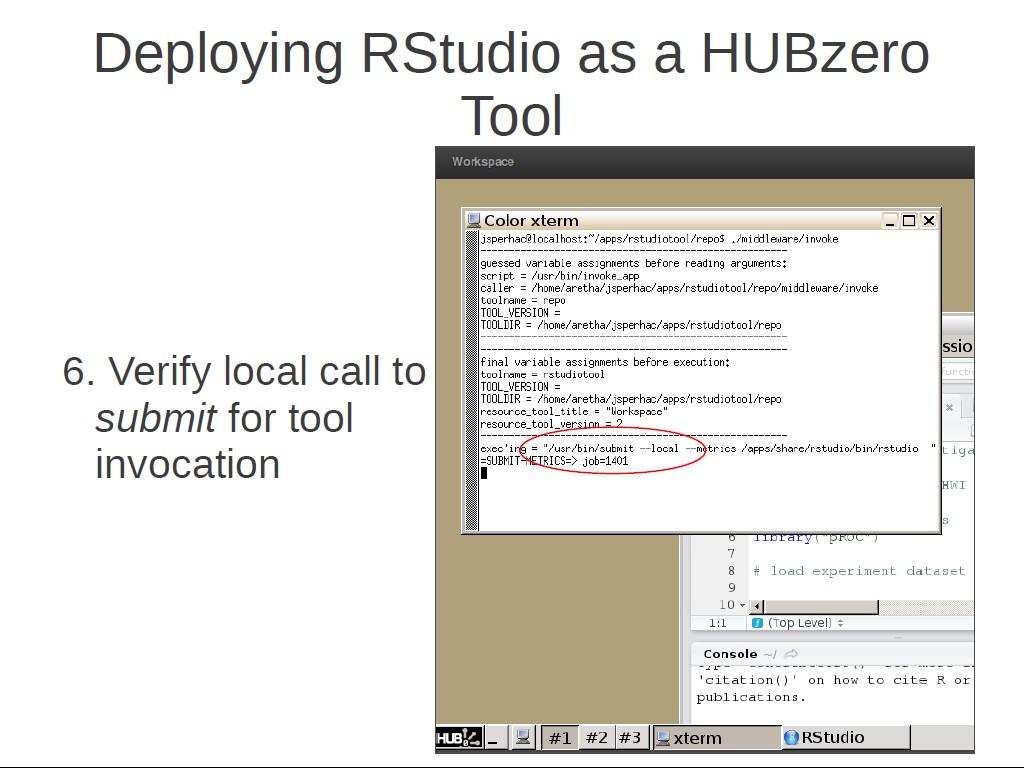 28. Deploying RStudio as a HUBzero…
635.90256923590255
00:00/00:00
28. Deploying RStudio as a HUBzero…
635.90256923590255
00:00/00:00 -
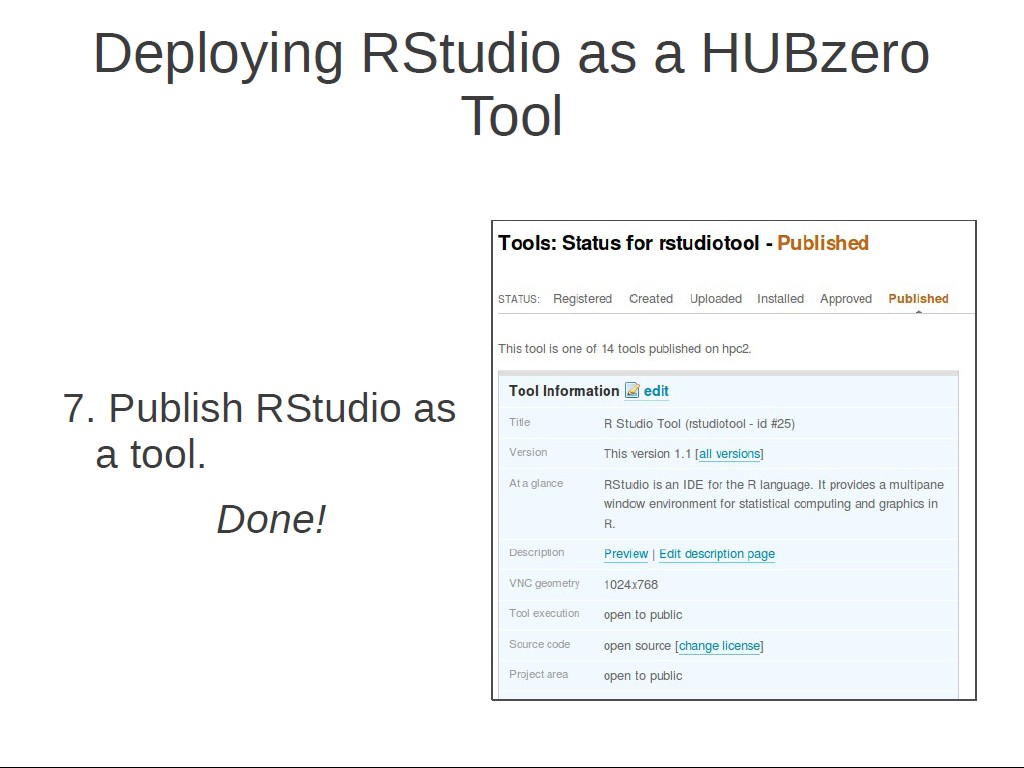 29. Deploying RStudio as a HUBzero…
648.314981648315
00:00/00:00
29. Deploying RStudio as a HUBzero…
648.314981648315
00:00/00:00 -
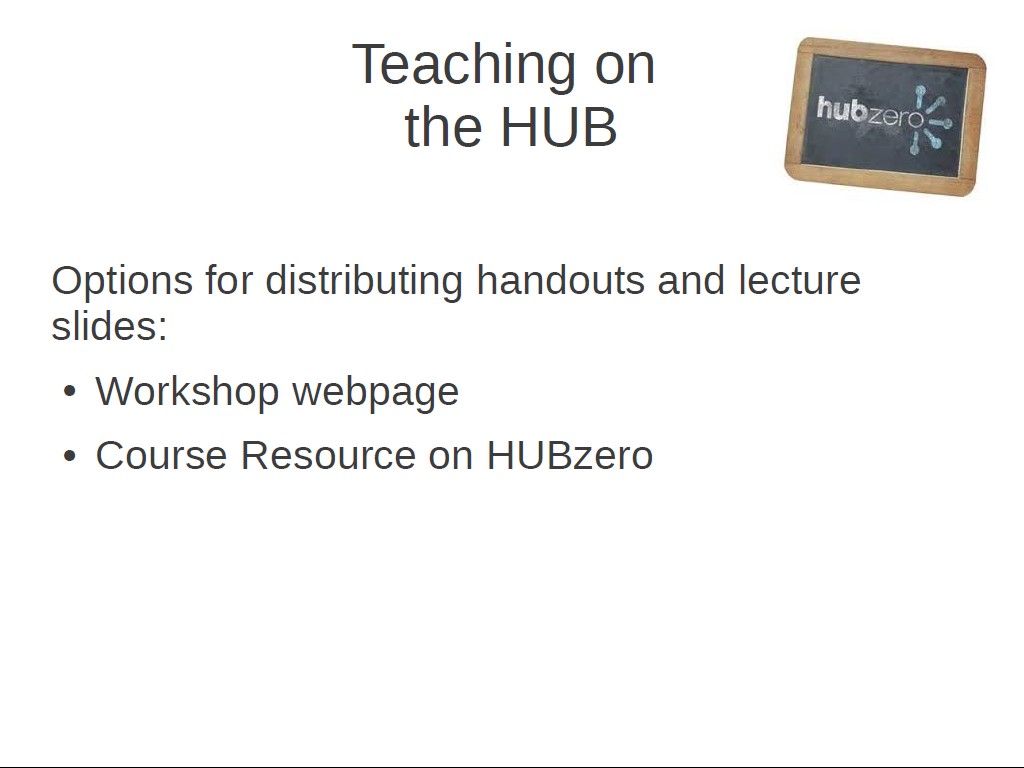 30. Teaching on the HUB
653.11978645311979
00:00/00:00
30. Teaching on the HUB
653.11978645311979
00:00/00:00 -
 31. Workshop webpage
655.38872205538871
00:00/00:00
31. Workshop webpage
655.38872205538871
00:00/00:00 -
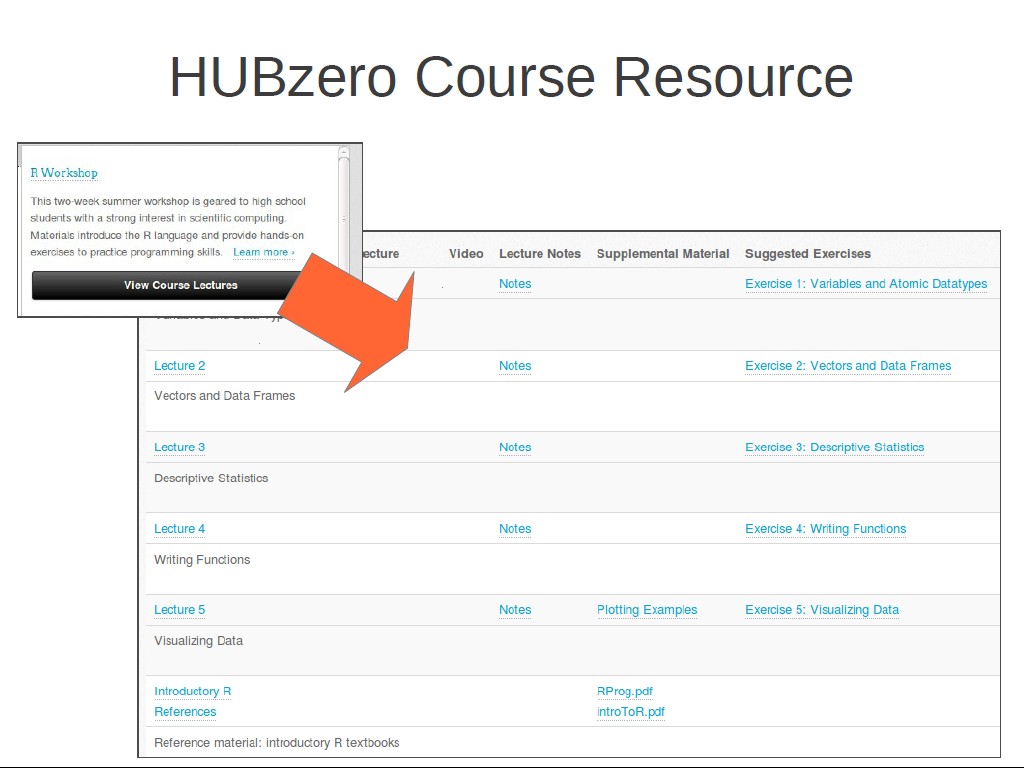 32. HUBzero Course Resource
668.36836836836835
00:00/00:00
32. HUBzero Course Resource
668.36836836836835
00:00/00:00 -
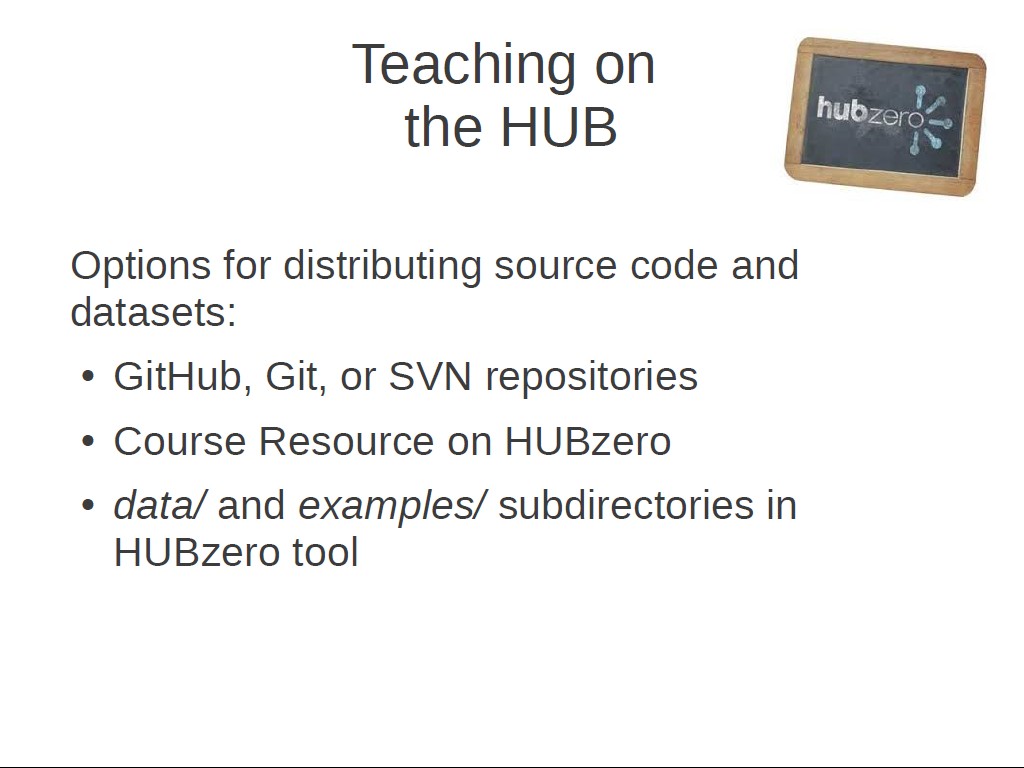 33. Teaching on the HUB
679.84651317984651
00:00/00:00
33. Teaching on the HUB
679.84651317984651
00:00/00:00 -
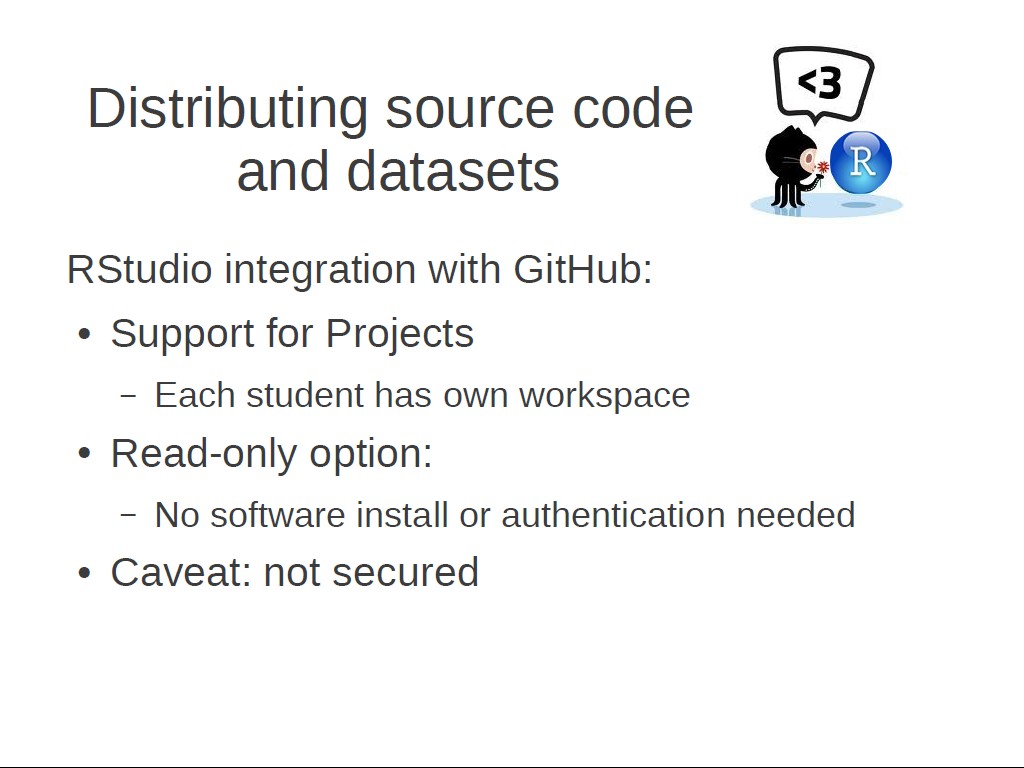 34. Distributing Source code and d…
684.0507173840507
00:00/00:00
34. Distributing Source code and d…
684.0507173840507
00:00/00:00 -
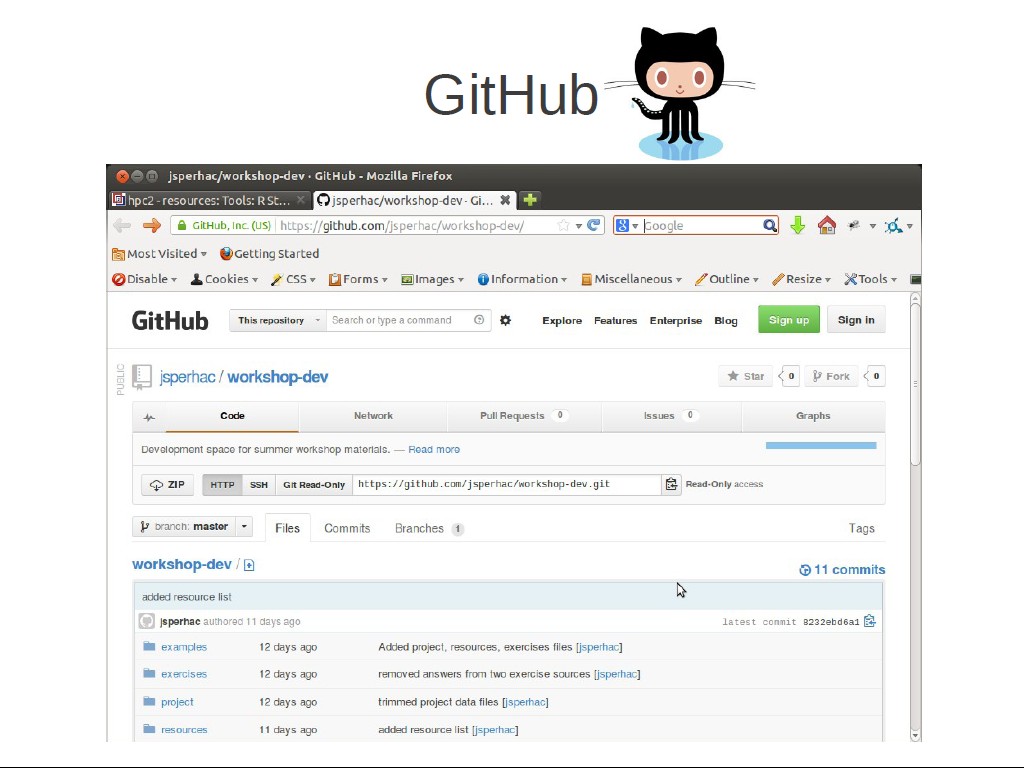 35. GitHub
688.05472138805476
00:00/00:00
35. GitHub
688.05472138805476
00:00/00:00 -
 36. RStudio data and sources:
692.85952619285956
00:00/00:00
36. RStudio data and sources:
692.85952619285956
00:00/00:00 -
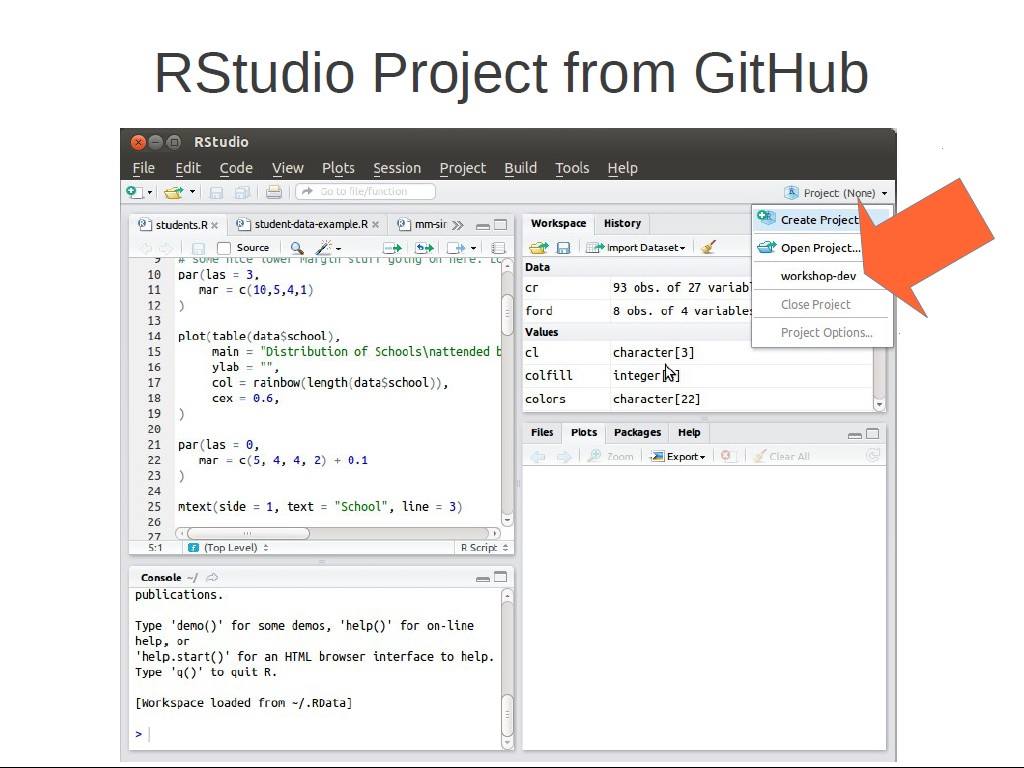 37. RStudio Project from GitHub
698.43176509843181
00:00/00:00
37. RStudio Project from GitHub
698.43176509843181
00:00/00:00 -
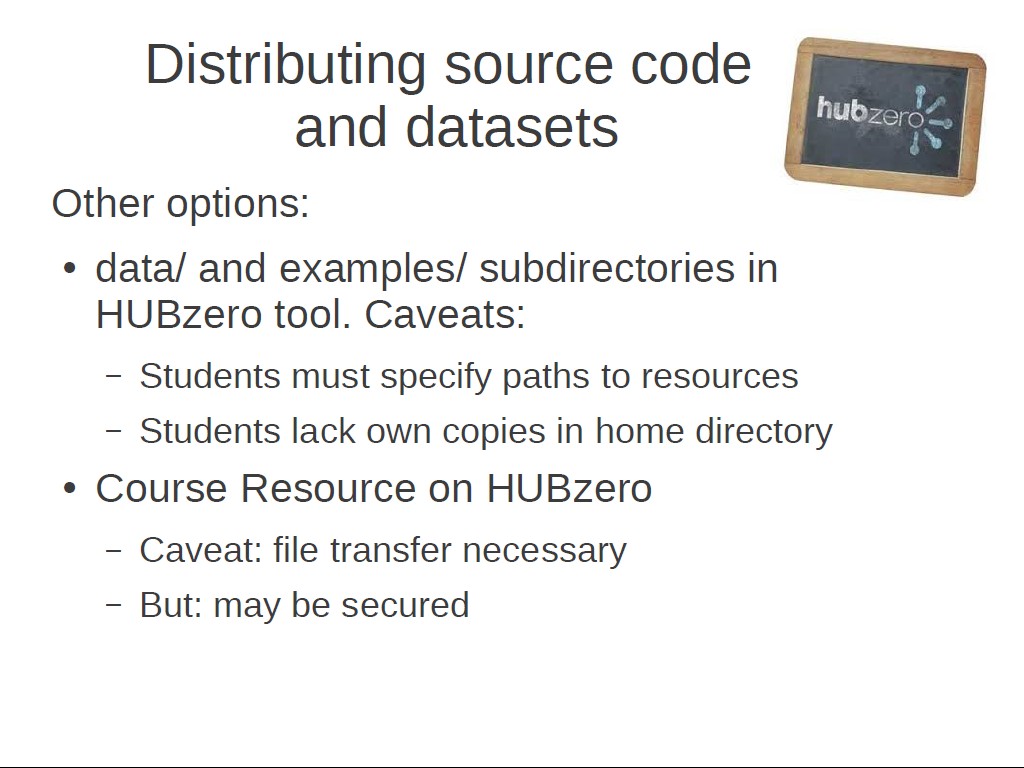 38. Distributing source code and d…
704.53787120453785
00:00/00:00
38. Distributing source code and d…
704.53787120453785
00:00/00:00 -
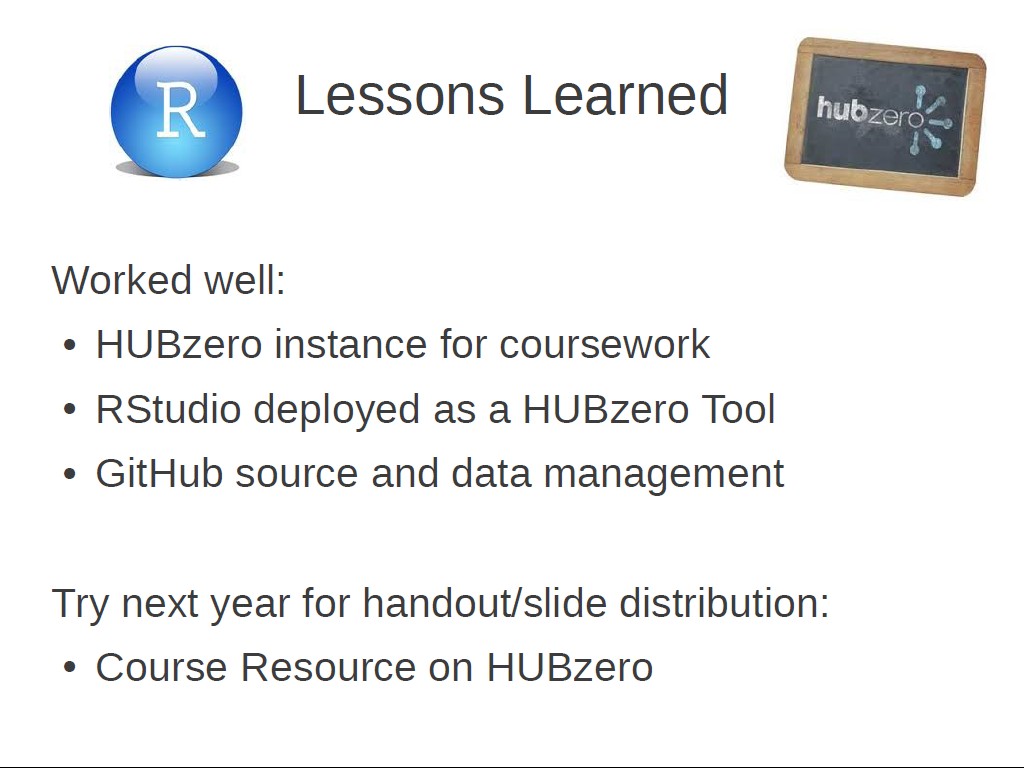 39. Lessons Learned
713.546880213547
00:00/00:00
39. Lessons Learned
713.546880213547
00:00/00:00 -
 40. Additional thoughts
730.76409743076408
00:00/00:00
40. Additional thoughts
730.76409743076408
00:00/00:00 -
 41. References and How-To Home pag…
737.83783783783781
00:00/00:00
41. References and How-To Home pag…
737.83783783783781
00:00/00:00 -
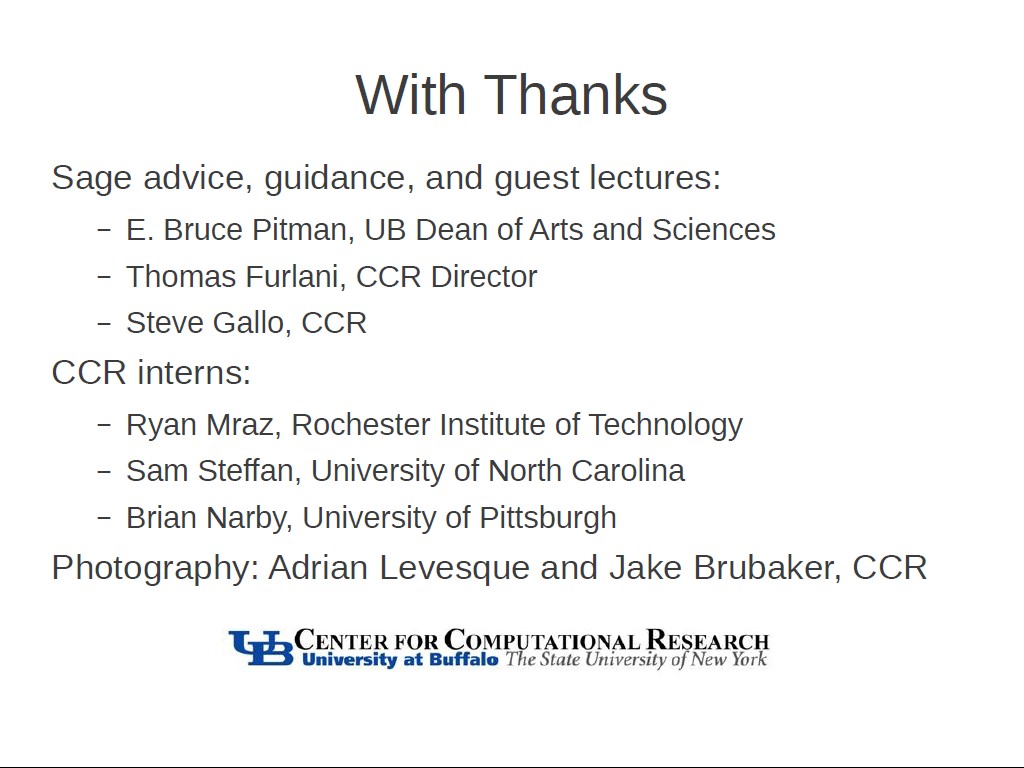 42. With Thanks Sage advice, guida…
750.78411745078415
00:00/00:00
42. With Thanks Sage advice, guida…
750.78411745078415
00:00/00:00 -
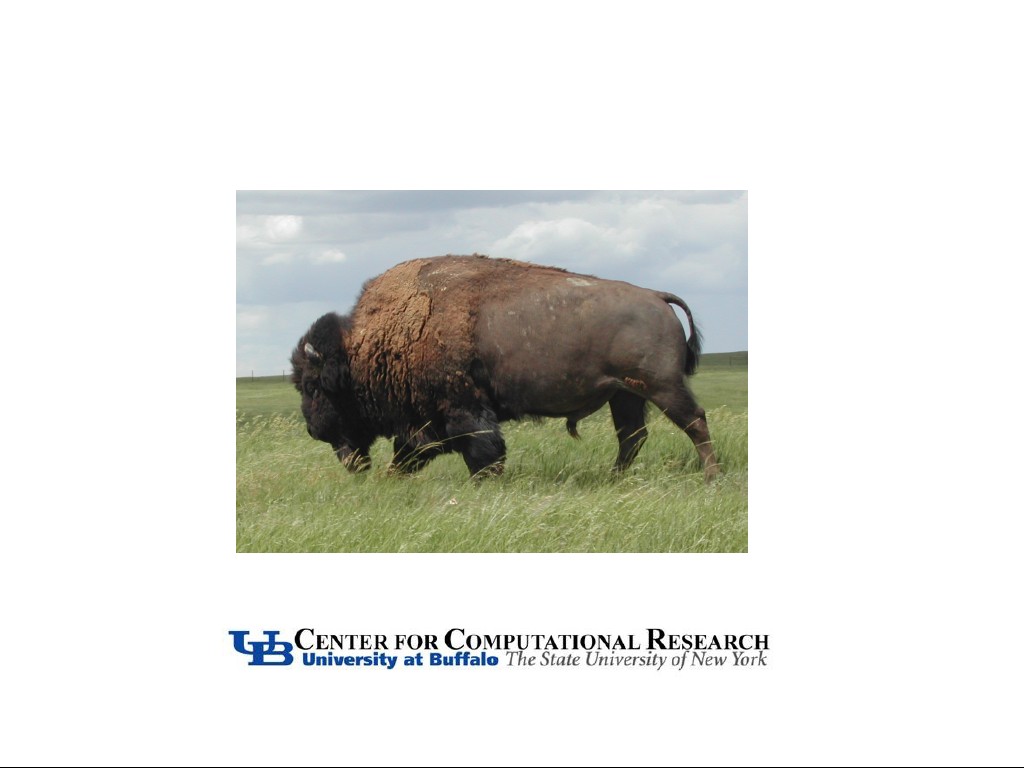 43. Acknowledgement
764.2976309642977
00:00/00:00
43. Acknowledgement
764.2976309642977
00:00/00:00